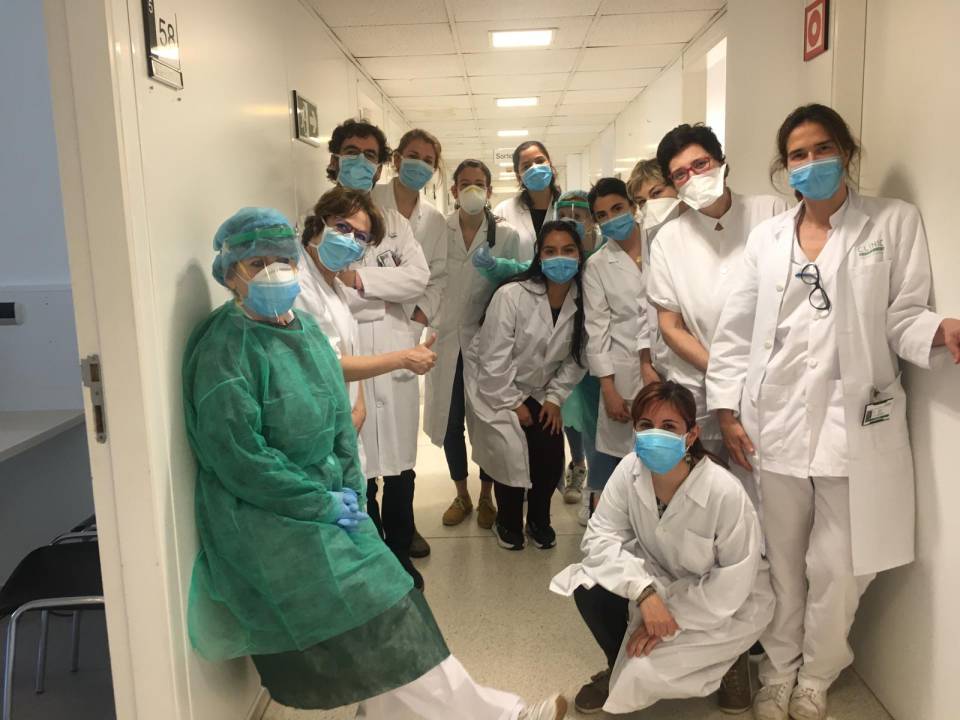A serological study led by ISGlobal, an institution supported by “la Caixa”, and the Hospital Clínic of Barcelona, reveals that 11.2% of the hospital staff has been infected by the new coronavirus, SARS-CoV-2.
“This is the first study that measures the prevalence of SARS-CoV-2 antibodies in a representative sample of healthcare workers in a high burden country,” says Alberto García-Basteiro, ISGlobal researcher, medical doctor at the International Health Service of the Hospital Clinic, and one of the coordinators of the SEROCOV-1 study.
The real percentage of people infected by SARS-CoV-2 remains one of the great unknowns in this pandemic, since the infection can cause a wide range of symptoms- from imperceptible to very severe. “Knowing the prevalence of infection among healthcare workers is of particular relevance, since it helps estimate – and mitigate- their exposure risk,” adds García-Basteiro, first author of the study.
The research team measured antibodies against one of the SARS-CoV-2 proteins in blood samples from 578 staff members working at the Hospital Clinic. To do so, they developed their own immune assay using the Luminex technology, which allows to reliably measure different types of antibodies (IgA, IgM and IgG) recognising different viral antigens at the same time. “The advantage is that we can increase the sensitivity of our Luminex assay by measuring antibodies to other viral antigens, since the appearance of each type of antibody is different and the response may vary between individuals,” explains ISGlobal researcher Gemma-Moncunill, first co-author of the study. In parallel, the authors performed PCR tests from nasopharyngeal swabs to detect active infections.
The results reveal that, of 578 study participants, 14 had an active infection (i.e. they were positive by PCR) at the moment of recruitment, 39 had been previously diagnosed by PCR, and 54 had developed antibodies against the virus (signalling recent or past infection). Of these 54 individuals, 21 (40%) had not been diagnosed at the time of infection, and half of these undiagnosed cases did not develop any COVID-19 symptoms. The total number of participants with evidence of past or current infection (by PCR and/or serology) was 65, or 11.2%.
Antibodies were generally detected after 10 days of symptom onset, and IgA antibodies could be detected slightly before IgM or IgG antibodies.
“Given that healthcare workers are a high-risk group, it is probable that the seroprevalence in the population is even lower than 11%, still far from the 60% herd immunity threshold we need to reach. In any case, it is still unknown if the presence of antibodies confers protection agains possible reinfections”, says Carlota Dobaño, ISGlobal researcher and senior author of the study. Based on the data from a hospital in Madrid, where almost 12% of the staff had tested positive by PCR by ends of March, and a modelling study estimating that up to 15% of the Spanish population could be infected, the seroprevalence observed in this study is lower than expected. However, the authors admit that this study may not be representative of other hospitals in Spain, since the Hospital Clinic implemented early preventive and screening measures.
“The fact that 40% of infections went undiagnosed underlines the importance of performing PCR tests to all healthcare workers, regardless of the presence of symptoms, in order to reduce the risk of hospital-acquired infections”, says Alfredo Mayor, ISGlobal researcher and co-senior author of the study.
This study has not been peer-reviewed and was posted as a preprint in the medRxiV server.
Reference
Garcia-Basteiro AL, Moncunill G, Tortajada M et al. Seroprevalence of antibodies against SARS-CoV-2 among health care workers in a large Spanish reference hospital. Posted on medRxiv on 28/04/2020.

